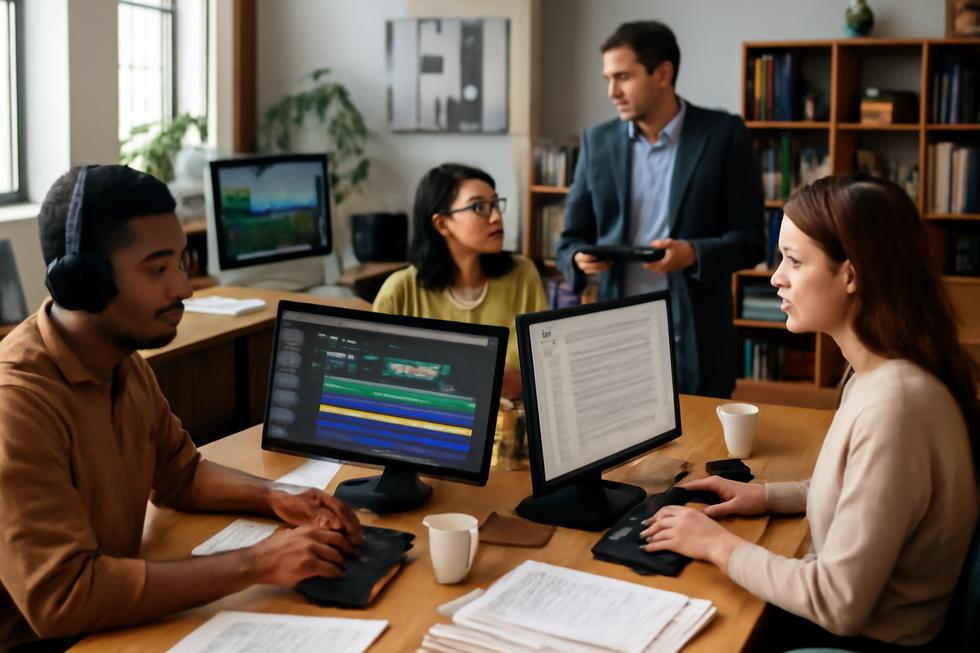Introduction
Copyright protection plays a critical role in safeguarding the creative assets that drive many businesses today. Whether your enterprise produces visual content, written materials, music, or software, understanding the scope of copyright and recognizing real-world examples is essential for protecting your investments and avoiding costly legal pitfalls. This exploration illuminates various categories of copyrightable works—from published illustrations and maps to films and software programs—demonstrating their relevance to business. It also outlines common forms of copyright infringement and legal considerations vital for compliance. Finally, the discussion covers what types of content are excluded from copyright protection and explains the legal doctrines that shape these boundaries. By grasping these facets, business owners can make informed decisions to secure and leverage their intellectual property.
Tables of Contents
Chapter 1: Examples of Copyright in Published Illustrations, Photographs, and Maps
- Navigating Legal Protections and Technological Boundaries in Copyrighted Visual Works
- Navigating Economic Rights and Licensing Complexities in Copyrighted Illustrations, Photographs, and Maps
- Visual Media as Instruments of Power: Geopolitical and Societal Stakes in Copyrighted Maps and Images
Chapter 2: Comprehensive Legal Foundations of Copyright in Books and Articles
- Navigating Copyright Protections and Limitations in Textual Works
- Navigating the Digital and Economic Landscape of Copyright in Books and Articles
- Navigating Societal and Geopolitical Influences on Copyright in Textual Works
Chapter 3: Examples of Copyright in Music, Compositions, and Recordings
- Understanding Composition vs. Sound Recording Copyrights in Music
- Navigating Complex Ownership and Licensing in Recorded Music: From Composition Rights to Master Use
- Navigating Copyright Protections in Musical Compositions, Printed Scores, and Synchronization Licensing
Chapter 4: Exploring Copyright Protections in Films, Videos, and Software Programs
- Navigating Legal Boundaries and Technological Protections in Films, Videos, and Software
- The Economic Forces Shaping Films, Videos, and Software Through Copyright
- Navigating the Societal and Geopolitical Impacts of Copyright in Audiovisual and Software Works
Chapter 5: Examples of Copyright Infringement and Legal Considerations
- Navigating AI and Technological Challenges in Modern Copyright Infringement
- Navigating Licensing Complexities and Market Consequences in Music and Film Copyright
- Navigating Legal Liabilities and Trademark Overlaps in Copyright Enforcement
Chapter 6: Examples and Limitations: Non-eligible Copyright Content and Doctrines
- Navigating the Idea–Expression Divide: Key Doctrines Defining Copyright’s Boundaries
- When Expression Meets Necessity: How Scènes à Faire and Merger Doctrines Shape Copyright Limits
- When Creativity Meets Restriction: Understanding Non-Creative Content and Fair Use in Copyright
Chapter 1: Examples of Copyright in Published Illustrations, Photographs, and Maps
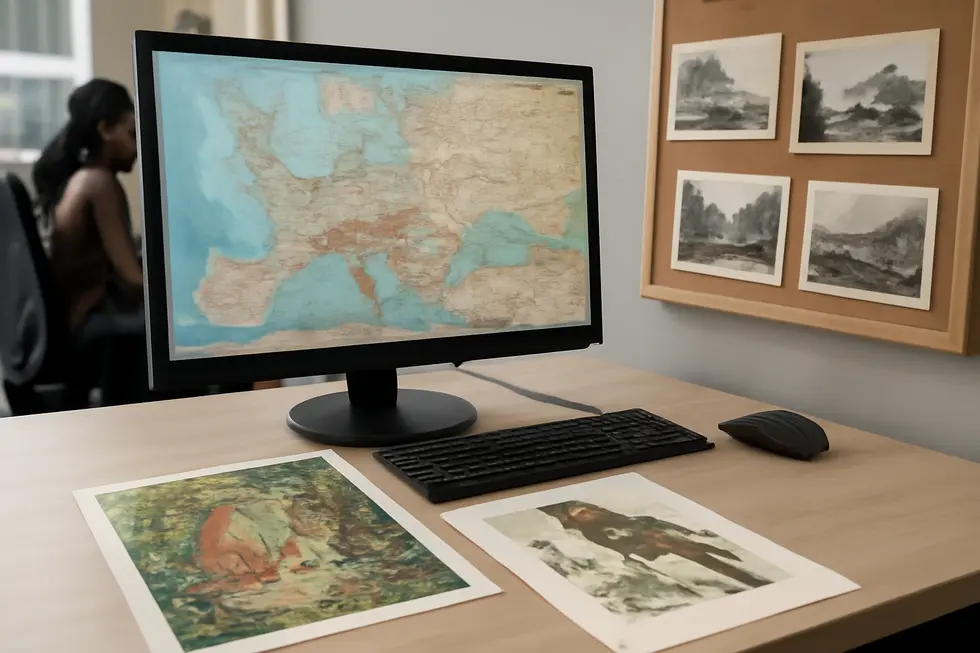
1. Navigating Legal Protections and Technological Boundaries in Copyrighted Visual Works
The legal and technological frameworks shaping copyright protection for published illustrations, photographs, and maps are complex yet essential for respecting creators’ rights. Copyright grants exclusive control over original visual expressions, lasting the creator’s life plus 70 years under U.S. law, extending up to 120 years for corporate works. However, not all reproductions qualify; for instance, exact photographic copies of two-dimensional art lack originality and thus copyright protection, as established in Bridgeman Art Library, Ltd. v. Corel Corporation (1999). Users may leverage fair use or fair dealing exceptions for educational, critical, or research purposes, assessing factors like purpose and market impact, but must secure permission beyond these bounds. Technological advances influence compliance—direct copying violates rights, but linking to images online generally does not, as it avoids reproducing the work itself. Licenses such as Creative Commons clarify allowable uses, including whether modifications are permitted, while digital rights management systems restrict unauthorized access to certain maps or images. Regardless of the use, proper attribution remains a consistent obligation to honor creators’ contributions and maintain academic integrity. This interplay of law and technology ensures that published illustrations, photographs, and maps can be lawfully used while preserving the protections intended for their originators. For guidance on specific scenarios, educational institutions offer valuable frameworks, such as the University of Derby’s extensive copyright resources.
2. Navigating Economic Rights and Licensing Complexities in Copyrighted Illustrations, Photographs, and Maps
Copyright protection grants creators exclusive economic rights over published illustrations, photographs, and maps, controlling reproduction, distribution, public display, and adaptation. These rights arise automatically upon creation and endure for the creator’s life plus 70 years, or longer for corporate authors. Economic factors center on how copyright holders leverage these rights through licensing agreements that define usage scope, duration, territories, exclusivity, and fees. Using images beyond fair use or fair dealing exceptions—such as for commercial purposes or broad distribution—generally requires explicit permission.
Jurisdictions vary in recognizing exceptions; for example, “fair use” in the U.S. allows limited quotation without authorization, while “fair dealing” in other countries may permit use of entire artistic works under certain conditions. “Freedom of panorama” provisions further complicate matters, as some countries permit photographing public artworks without infringement, while others apply restrictive rules.
Licensing challenges compound when artworks originate from stock photo databases or archives, where redistribution is often curtailed. Digital rights management tools also help artists protect images online. Understanding these economic and licensing nuances is vital to responsibly using copyrighted visual materials and respecting creators’ commercial interests.
For comprehensive guidance on licensing terms related to image use, see copyright considerations for copyrighted materials.
3. Visual Media as Instruments of Power: Geopolitical and Societal Stakes in Copyrighted Maps and Images
Copyright in published illustrations, photographs, and maps extends beyond protecting creative expression; it profoundly shapes geopolitical narratives and societal identity. Maps, for instance, often act as symbolic instruments of sovereignty and historical memory. The African Union’s rejection of the colonial-era Mercator projection in favor of the more accurate Equal Earth projection asserts not just cartographic accuracy but an ethical and political redress of historical distortions that diminished Africa’s prominence. Similarly, territorial disputes such as those between Cambodia and Thailand underscore how copyrighted maps serve as decisive legal evidence in sovereignty claims, revealing that control over cartographic content equates to influence in international relations.
Photographs and illustrations convey cultural and political narratives, framing collective memory and identity. Artistic works in China use colonial maps and archival imagery as critique tools, engaging with histories of exploitation, while Japan’s long tradition of photographic documentation shapes both internal identity and global perceptions. Control over these images often reflects governance strategies—China’s restriction of unauthorized maps enforces territorial assertions, while democratic societies face challenges balancing image rights with national security concerns. Such visual media are thus not only creative works but also contested terrains where copyright intersects with geopolitical power and societal values.
For deeper insight into these dynamics and related examples, the African Union’s map reforms provide a compelling study: https://african-union.int
Chapter 2: Comprehensive Legal Foundations of Copyright in Books and Articles
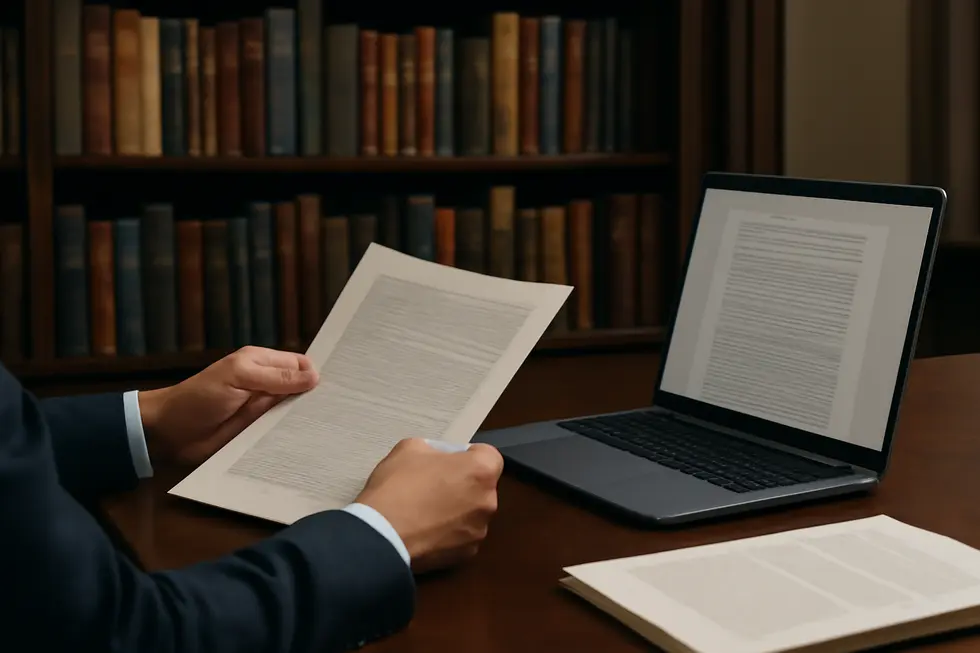
1. Navigating Copyright Protections and Limitations in Textual Works
Copyright law automatically safeguards original literary works fixed in tangible form, such as books and articles, without a need for formal registration. This protection grants copyright holders exclusive rights to reproduce, distribute, and adapt their works. However, these rights are not absolute; the fair use doctrine allows certain uses—like criticism, teaching, and research—without permission, based on factors including the purpose of use and the amount copied. The duration of protection typically spans the author’s life plus 70 years, after which works enter the public domain, freely available for use. Importantly, copyright protects the unique expression of ideas, not the ideas themselves, excluding facts and common plot elements from protection. This legal framework seeks balance, preserving creators’ rights while enabling socially valuable uses through exceptions. For detailed guidance, resources like the University of Michigan’s copyright basics provide insights and examples of fair use applied to textual materials. To explore how copyright influences business contexts involving literary works, see this copyright information for books.
2. Navigating the Digital and Economic Landscape of Copyright in Books and Articles
Copyright in textual materials profoundly shapes how books and articles are distributed and consumed in the digital age. Technologies like e-books, PDFs, and online repositories rely heavily on digital rights management (DRM) systems to control copying and sharing. These methods enforce access restrictions, ensuring that only authorized users engage with copyrighted content while preserving creators’ exclusive rights. The ease of scanning and digitally reproducing text challenges copyright enforcement, especially when educational institutions upload materials to e-reserve systems. Such uses must carefully respect copyright law to avoid market harm. Economically, copyright grants authors and publishers exclusive rights that incentivize creativity by safeguarding their capacity to earn from their works. Yet, doctrines like fair use strive to balance this by allowing limited copying for purposes such as education without unduly threatening legitimate markets. Courts often weigh the commercial impact of reproductions, as exemplified in prominent legal cases that scrutinize whether fair use might reduce licensing revenues. Licensing remains a key economic tool, providing a legal framework for controlled access while supporting sustainable creative industries. This intricate interplay between technological controls and economic incentives defines modern copyright’s role in textual works. For more on balancing copyright interests and business, see copyright information for books.
Further insights into these economic considerations are discussed in reports like the Naval War College’s analysis of market impact in fair use cases.
3. Navigating Societal and Geopolitical Influences on Copyright in Textual Works
Copyright in textual materials like books and articles plays a significant role in shaping how knowledge and culture circulate globally. At its core, copyright balances the rights of authors to control reproduction and distribution against society’s need for access, especially in education. While doctrines like fair use or Creative Commons licenses enable some flexibility, they are often uncertain and vary by context, which can affect equitable access, particularly for marginalized communities and nations with limited resources. Moreover, copyright protects only the unique expression of ideas, not facts themselves, allowing information to flow while respecting original creativity.
Geopolitically, copyright law’s implementation differs across countries, guided by frameworks such as the Berne Convention. These variations influence who can access certain books and articles legally, often favoring publishers in wealthier nations. This dynamic affects the visibility of scholars globally and underlines power imbalances in cultural and academic discourse. Additionally, copyright’s intersection with political expression reveals tensions between protecting intellectual property and allowing social critique through limited use of copyrighted works. Understanding these societal and geopolitical dimensions encourages a nuanced view of how copyright impacts the global exchange of textual knowledge.
For detailed guidance on educational fair use, resources like the University of Minnesota Libraries offer valuable insights.
Chapter 3: Examples of Copyright in Music, Compositions, and Recordings
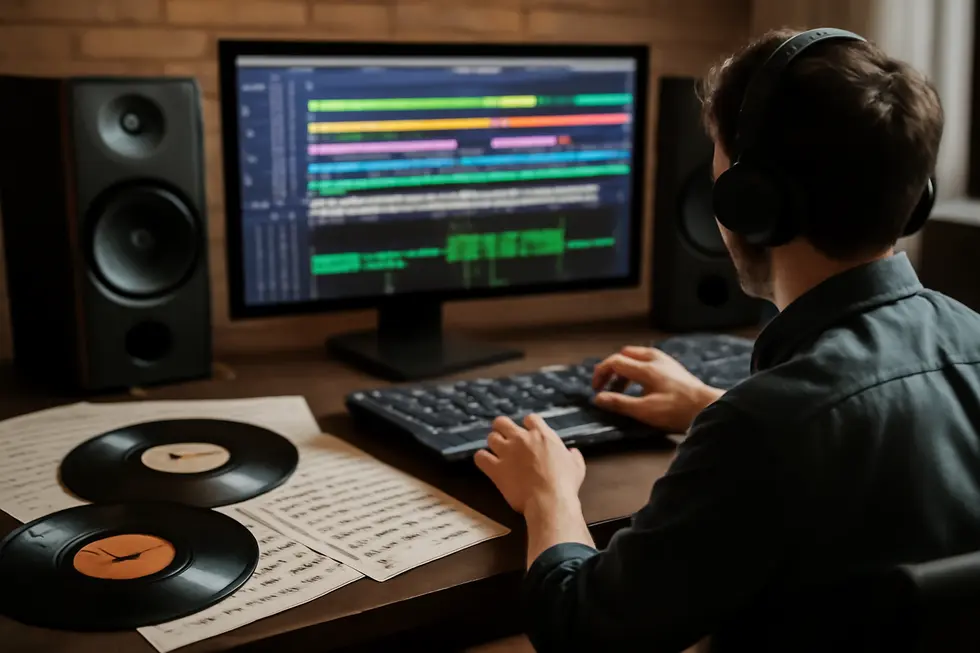
1. Understanding Composition vs. Sound Recording Copyrights in Music
Copyright in music divides into two fundamental categories: composition copyright and sound recording copyright. Composition copyright protects the original musical work—the melody, lyrics, and arrangement—crafted by songwriters and composers. This rights category covers the written music irrespective of who performs or records it. Sound recording copyright, on the other hand, protects the specific recorded performance of that composition, embodied in tangible media like CDs, digital files, or vinyl records. Typically, performers or record labels hold this type of copyright.
For example, independent artists who write and record their own songs often own both copyrights, while in commercial industry settings, these rights usually split between songwriters and labels. Classic cases like “Hey Jude” illustrate this clearly: the composition rights belong to a music publisher, whereas the sound recording rights are owned by the record company that released The Beatles’ version. Licensing for usage reflects this split, where synchronization licenses cover the composition, and master licenses cover the sound recording.
This distinction is crucial for understanding music rights, royalties, and licensing complexities within the music industry. For more in-depth insights into licensing and copyright distinctions, see copyright language for business owners.
2. Navigating Complex Ownership and Licensing in Recorded Music: From Composition Rights to Master Use
Copyright in music intricately divides ownership between compositions and sound recordings. Compositions, including melodies, lyrics, and arrangements, are usually owned by songwriters, composers, lyricists, and publishers. In contrast, sound recordings—specific performances captured in a recording—belong to the record label or the artist if independently produced. This division means a single song can have multiple copyright holders. For example, an artist who independently writes, performs, and records a song holds full rights to both composition and recording, whereas collaborative works involve shared ownership, often documented via split sheets to clarify contributors’ shares and avoid disputes.
Licensing practices reflect these ownership layers. Mechanical licenses allow reproduction and distribution of compositions, such as for cover versions, while master use licenses govern the use of the actual recordings, essential for sampling or remixing. Sync licenses further complicate matters by requiring separate clearance for composition and recording when used in visual media. Additionally, printed music holds copyright not only in its composition but also in its typographical arrangement, often needing permission for copying or adaptation.
This multifaceted ownership and licensing framework demands careful attention to rights clearance in recorded music, ensuring legal use and monetization of creative works. For a deeper insight into copyrights distinguishing compositions and recordings, consult the comprehensive SOCAN Magazine article on music copyrights.
For business owners navigating music rights, understanding these nuances is key; explore further guidance on copyright language for business owners.
3. Navigating Copyright Protections in Musical Compositions, Printed Scores, and Synchronization Licensing
Copyright in music safeguards two distinct yet intertwined works: the musical composition—encompassing melody, harmony, and lyrics—and the sound recording, which captures the actual performance. These rights often belong to separate entities: songwriters or publishers control the composition, while record labels or artists hold the recording rights. Printed music is likewise protected as a fixed expression, meaning unauthorized reproduction or distribution of sheet music is prohibited.
When music is paired with visual media, such as films or commercials, synchronization licensing becomes essential. This process requires obtaining permission from both the composition’s copyright holders and the owners of the sound recording. Without these dual licenses, using a song in timed relation with images is a copyright infringement. Alternatively, if rights to an original recording are unavailable, licensing a cover version can resolve clearance challenges.
Historical legal disputes, like those involving iconic artists over melody similarities, highlight how deeply intertwined and complex music copyrights can be. Sync licensing not only protects creators but also generates revenue through upfront fees and royalties, supporting a vibrant multimedia industry. This dual-layered copyright system ensures that both the composition’s creative essence and its recorded expression receive proper legal recognition and compensation.
For further understanding of music rights and licensing complexities, see this comprehensive overview of copyright definitions for business owners.
(Source: Indiana University Libraries Guide – Copyright for Filmmakers)
Chapter 4: Exploring Copyright Protections in Films, Videos, and Software Programs
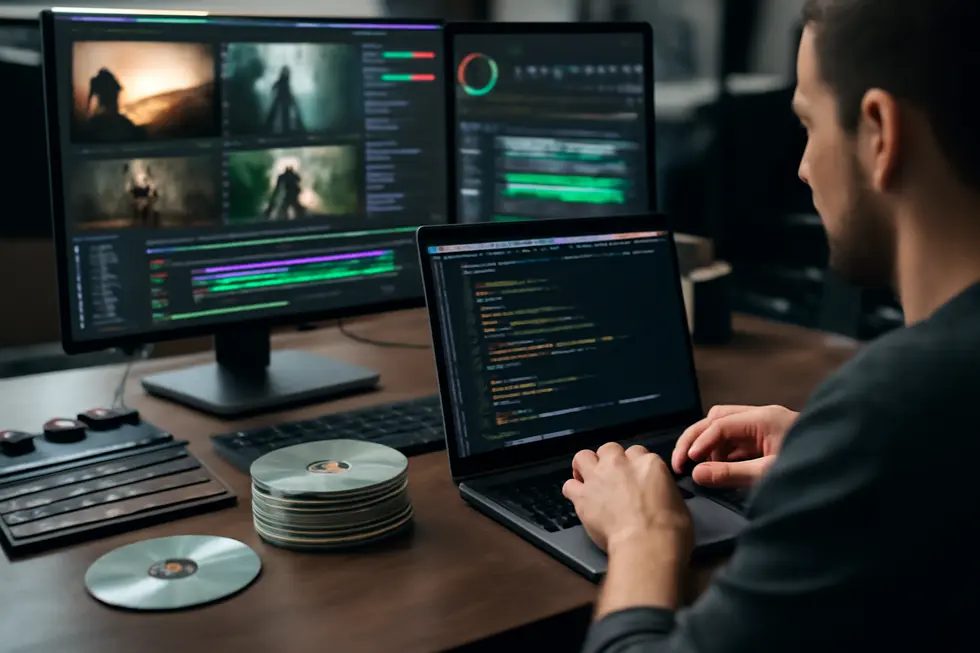
1. Navigating Legal Boundaries and Technological Protections in Films, Videos, and Software
Copyright in films, videos, and software programs merges legal doctrines with evolving technologies to safeguard creative expression. In film and video, incidental appearances of copyrighted objects—like branded apparel or background artwork—often fall under fair use, as courts recognize such depictions typically do not constitute direct copying. For instance, a legal dispute involving a phone’s design shown in a movie was dismissed when the court ruled the mere depiction did not infringe copyrights. Meanwhile, digital rights management (DRM) technology serves as a frontline defense against unauthorized copying and distribution of digital films and videos, though determined breaches through hacking remain a challenge.
Software programs receive copyright protection for their original source code, considered literary works. Unauthorized replication or translation of code can infringe copyright unless independently created. While patents may protect certain software innovations, they address inventions rather than expressive content. Additionally, legal ambiguity surrounds AI-generated content; U.S. law requires human authorship for copyright, leaving purely AI-created works unprotected, even as AI training datasets stir ongoing debate on fair use implications.
These layered protections illustrate how legal frameworks and technological tools interact to define and enforce rights in creative media. For more on filmmaker copyright issues, see Indiana University Libraries’ guide.
For insights on the intersection of software patents and copyright, visit this detailed explanation.
2. The Economic Forces Shaping Films, Videos, and Software Through Copyright
Copyright protection plays a pivotal economic role in the creative sectors of films, videos, and software programs. By securing exclusive rights, it safeguards revenue streams vital to sustaining creators’ livelihoods and funding new projects. Global digital piracy, for instance, causes an estimated $75 billion annual loss to the media and entertainment industry, with the U.S. alone forfeiting at least $29.2 billion yearly across content types. Such losses undermine innovation by reducing financial incentives. Conversely, the public domain fosters innovation and cost efficiency, allowing industries to reuse freely available materials to accelerate production and lower expenses. Emerging technologies and digital platforms also expand markets, generating fresh revenue opportunities rather than merely displacing existing works. However, the rise of AI-generated content introduces complex legal uncertainties that cloud ownership and licensing, potentially hindering investment and economic growth in this emerging sector. Exemplifying copyright’s constructive economic impact, Nigeria’s Nollywood contributes around $1.4 billion annually to its GDP, supporting thousands of jobs. Thus, copyright balances protecting creators’ profits and encouraging industry evolution amid technological shifts. For deeper insights on public domain benefits, see copyright law and public domain. External reference: Impact of piracy on media and entertainment revenue.
3. Navigating the Societal and Geopolitical Impacts of Copyright in Audiovisual and Software Works
Copyright protection in films, videos, and software programs extends far beyond legal frameworks, shaping and reflecting societal values and geopolitical forces globally. Societally, robust copyright enforcement safeguards creators’ livelihoods and fuels innovation, yet regions like Bangladesh reveal challenges where piracy erodes artists’ revenues and discourages content creation. Conversely, copyright also balances access with inclusivity, demonstrated by treaties like Marrakesh that enable visually impaired individuals to cross borders for equitable knowledge access. On a geopolitical scale, emerging technologies such as AI-generated content complicate traditional copyright laws. Issues around authorship, authenticity, and liability provoke new legislation, including regulatory efforts like the EU AI Act and U.S. Take It Down Act to manage harmful or misleading AI creations. These developments accentuate digital divides between wealthy nations equipped to enforce these rules and developing countries struggling with limited resources. Moreover, shifting global power dynamics see institutions and coalitions like BRICS and the Belt and Road Initiative influencing intellectual property governance, while AI tools assist industries reliant on software—such as MedTech—in managing geopolitical risks. Meanwhile, regional initiatives foster cultural diversity and economic strength in the audiovisual sector, as evidenced by the EU Reboot Project’s efforts to enhance the continent’s global media position. This complex interplay underscores how copyright in audiovisual and software works is inseparable from societal equity, technological progress, and international cooperation. For more on copyright’s commercial and legal facets, see copyright language business owners. Further insights on AI and copyright governance are available through external resources like the detailed analyses of national and international laws shaping this evolving landscape.
Chapter 5: Examples of Copyright Infringement and Legal Considerations
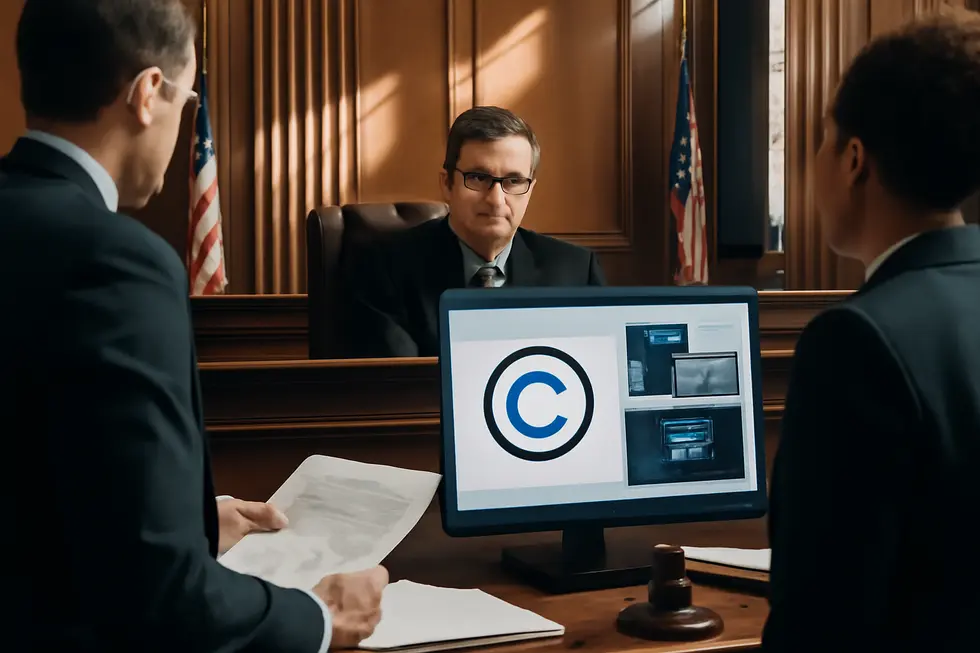
1. Navigating AI and Technological Challenges in Modern Copyright Infringement
Navigating AI and Technological Challenges in Modern Copyright Infringement
Copyright infringement traditionally involves direct actions like unauthorized copying, distribution, or translating protected works. However, the rise of AI introduces complex challenges in determining infringement. AI models often train on vast amounts of data scraped from the web, including copyrighted texts and images, frequently without permission. This practice has sparked legal battles over whether AI-generated content that closely resembles original works constitutes infringement.
Courts face difficulty in proving if AI outputs are substantially similar to protected works or merely inspired by them. High-profile lawsuits highlight disputes over training data and fair use boundaries, emphasizing tensions in applying existing copyright frameworks to evolving technologies. Additionally, tracing infringement is complicated by AI’s ability to replicate artistic styles or fictional characters without direct copying.
Technological tools to detect infringing AI content exist but require transparency and reasonable explanations for takedowns to avoid misuse. Legal remedies still apply, including injunctions, damages, and statutory penalties, but courts continue refining the application of these to AI contexts.
For a detailed exploration of AI and copyright issues, see the comprehensive analysis at Brooklyn Library on AI and Copyright. For broader foundational concepts in copyright relevant to business and technology, visit copyright-definition-computer.
2. Navigating Licensing Complexities and Market Consequences in Music and Film Copyright
Copyright infringement in the music and film industries often arises from unauthorized use of protected content, such as playing songs in films without synchronization licenses or distributing pirated movies online. Filmmakers must secure two distinct licenses when incorporating music: one for the musical composition from the publisher and another for the sound recording from the record company. If the original recording cannot be licensed, commissioning a new version is common practice after obtaining composition rights. Licensing agreements specify important terms like territory and duration, ensuring both creators’ rights and users’ legal security. Legal experts play a critical role in negotiating these agreements and assessing defenses against infringement claims.
Infringement carries significant market risks, including costly litigation, loss of distribution opportunities, damaged reputations, and diminished insurance options. Conversely, proper licensing supports creators’ fair compensation and fosters a sustainable creative ecosystem. Misunderstandings persist, such as the myth of a “30-second safe use” rule in music—any use without permission may constitute infringement. Fair use is narrowly applied and rarely covers commercial music or film usage. For comprehensive guidance, filmmakers can refer to resources like Indiana University’s detailed Copyright Guide for Filmmakers which clarifies licensing intricacies and dual copyright ownership in film music.
3. Navigating Legal Liabilities and Trademark Overlaps in Copyright Enforcement
Copyright infringement manifests in diverse forms, ranging from unauthorized reproductions to compelling legal complexities involving secondary liabilities and trademark intersections. A striking example is a lawsuit against an AI image platform accused of generating works identical to copyrighted content, raising questions about the platform’s responsibility for user actions. This highlights how infringement extends beyond direct copying to include enabling or encouraging unauthorized use. Meanwhile, landmark rulings like the Supreme Court’s protection of parody—even when commercial—demonstrate the nuanced boundaries copyright enforcement must respect under fair use.
Legal obligations require compliance with frameworks such as the Digital Millennium Copyright Act (DMCA), where platforms and sellers balance takedown notices against counterclaims to avoid false accusations and liability. Trademarks further complicate this landscape when brand logos or celebrity likenesses are used without permission, blending copyright with trademark law and publicity rights. Successful defenses, like protecting a celebrity’s identity from unauthorized commercial exploitation, underscore the intersection of intellectual property types.
Understanding these overlaps is essential for tailored enforcement strategies that protect creative expression while respecting legal limits. For further insight into how trademarks relate to copyright protection, see more at trademark protection business name and logo. Additionally, detailed discussion on fair use in commercial contexts is explored in the Supreme Court case analysis available at https://www.law.cornell.edu/supct/html/92-1292.ZS.html.
Chapter 6: Examples and Limitations: Non-eligible Copyright Content and Doctrines
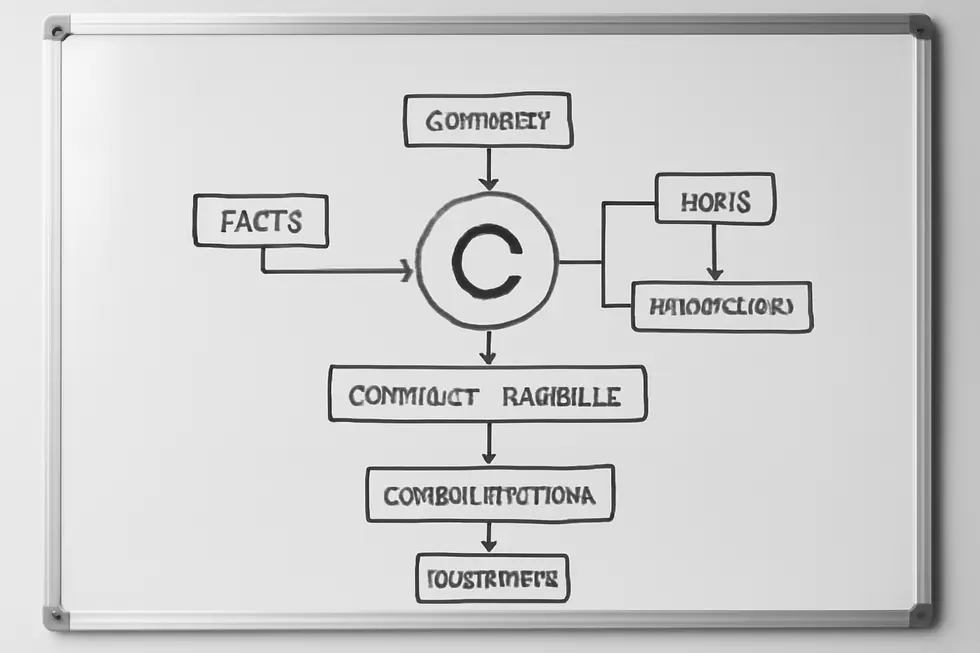
1. Navigating the Idea–Expression Divide: Key Doctrines Defining Copyright’s Boundaries
Copyright law fundamentally distinguishes between ideas and their expressions, protecting only the original manner in which ideas are conveyed. This idea–expression distinction prevents granting monopolies over knowledge or facts while safeguarding creative works. Central doctrines clarify this boundary: the merger doctrine applies when an idea has very limited ways to be expressed, making copyright protection improper. For example, factual statements like a birthdate cannot be copyrighted, since protecting them would hinder free access to essential facts. Similarly, the scènes à faire doctrine excludes common or indispensable elements within a genre—typical story tropes such as parental disapproval in romance narratives remain free to use, as they are standard conventions rather than unique expressions. Short phrases, individual words, and functional systems also fall outside copyright’s scope, with patent law covering inventions instead, as established in Baker v. Selden. Even compilations mainly composed of facts lack copyright unless they include original creative elements. This framework ensures creators can protect distinctive expression without restricting the public’s ability to use underlying concepts and cultural conventions. Such balance fosters creativity while maintaining open access to fundamental knowledge and shared practices. For a deeper understanding, more examples are available in specialized guides like the copyright information example business.
More information on these principles can be found in judicial precedents such as Baker v. Selden [3].
2. When Expression Meets Necessity: How Scènes à Faire and Merger Doctrines Shape Copyright Limits
The doctrines of scènes à faire and merger highlight fundamental limits on what copyright law protects by excluding certain expressions that are either indispensable or virtually inseparable from the underlying idea. The scènes à faire doctrine excludes standard elements or scenes that arise naturally from a genre or setting. For example, typical characters or recurring plot devices commonly found in love stories or detective tales cannot be copyrighted because they represent the building blocks of those genres. Similarly, programming routines dictated by software functionality fall under this rule. The merger doctrine addresses situations where an idea has so few possible expressions that the expression itself merges with the idea, making copyright protection inappropriate. This applies to factual statements, short phrases, or unavoidable forms of expression, since protecting these would hinder creative communication. Both doctrines maintain a crucial balance by ensuring that while original creative works enjoy protection, the essential, standard components necessary for artistic collaboration and innovation remain free for use. This distinction prevents exclusive rights from overreaching into shared cultural and intellectual foundations. For more detailed coverage on the practical scope of copyright protection, see copyright information example business. External reference: University of Derby’s comprehensive guide on copyrighted materials.
3. When Creativity Meets Restriction: Understanding Non-Creative Content and Fair Use in Copyright
Non-creativity sets essential boundaries in copyright law by excluding ideas, facts, and commonplace elements from protection. The idea/expression distinction ensures only the unique expression of an idea qualifies for copyright, not the idea itself—allowing, for example, multiple works about star-crossed lovers without infringement. Similarly, the scènes à faire doctrine excludes genre-specific, standard elements like love triangles from protection. The merger doctrine further limits copyright when an expression has few alternatives, such as short factual statements, to avoid monopolizing an idea’s expression. These limitations preserve freedom for creators and the public alike.
Complementing these limits, fair use permits lawful, unlicensed use of copyrighted material in ways that promote social and cultural interests. Uses like commentary, criticism, scholarship, parody, and news reporting may qualify as fair use when courts consider factors such as purpose, nature of work, amount used, and potential market impact. Notably, parody has been upheld as fair use even in commercial contexts, balancing respect for creators with public benefit.
Together, non-creativity exclusions and fair use carve out vital space for creativity, knowledge-sharing, and cultural expression, preventing copyright from becoming a barrier to innovation and discourse.
For a deeper understanding of copyright scope and limitations, consult the University of Michigan Library’s guide on copyrightability.
Final thoughts
Appreciating the scope of copyright through concrete examples empowers business owners to make deliberate and informed decisions about the use, creation, and protection of their intellectual property. Recognizing what types of creative works qualify for copyright—be it illustrations, textual content, music, films, or software—helps safeguard valuable assets from unauthorized use. Equally important is understanding how infringement occurs and the legal frameworks that intervene, including exemptions like fair use. Furthermore, knowing which content falls outside copyright protection prevents unnecessary legal disputes and promotes better compliance. Ultimately, a well-rounded grasp of these elements equips businesses to uphold their rights and foster innovation responsibly.
Your IP is the foundation of your success – let’s protect it together before it’s too late. We can’t wait to help you turn your ideas into legally secured assets.
About us
undefined
